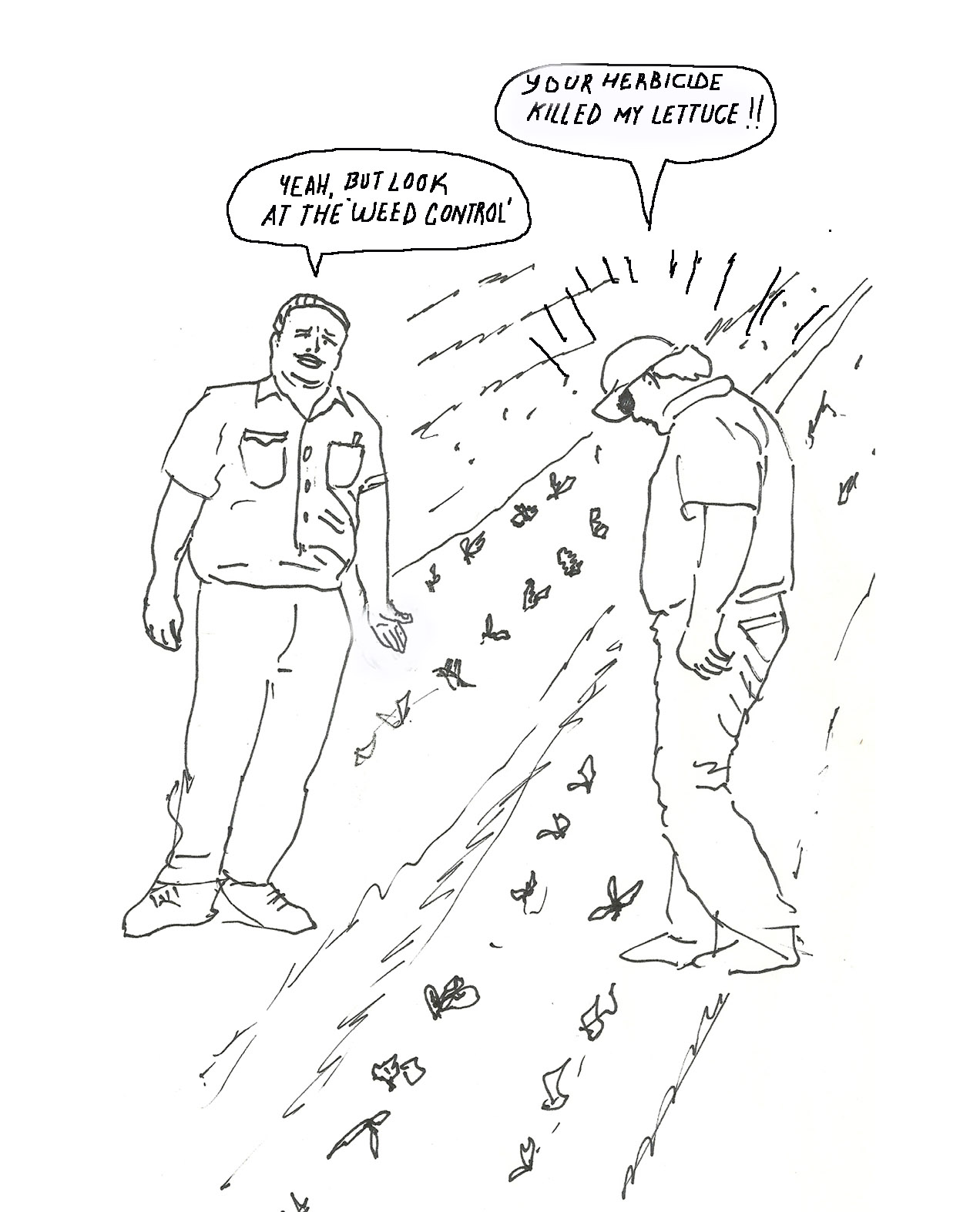
|
|
|
|
||||||||||||

|
|||||||||||||||
|
|
|||||||||||||||
|
|
|||||||||||||||
|
Kerb SC is registered for use in lettuce at rates of 2.5 pts. to 5 pts./ac. These
rates do not vary for weed species or soil type but for irrigation method.
It is important that all of the three peemergent herbicides used in lettuce be at the right place at the right time to be effective. The right place is around the germinating weed seeds and the right time is when they are germinating. Unlike Prefar(bensulide) or Balan(Benefin), Kerb moves readily with high amounts of irrigation water. Prefar and Balan adhere more strongly to the soil. When lettuce is germinated with furrow irrigation and the Kerb is applied after planting and before the first irrigation, the water moves laterally and upward (subbed) and dissolves but does not move the herbicide downward. Higher rates are required for effective weed control because much of the herbicide stays on the surface. When the herbicide is applied after planting, before the first irrigation and sprinkler irrigation is used, the kerb is moved with the overhead water further into the soil. Less herbicide is needed and rates drop by about one third. Depending upon the weed species and time of the season, some of the herbicide may have moved deeply into the soil and be below the germinating weed seeds. This is why delayed applications by chemigation are often used with Kerb. Chemigation is the most efficient means of concentrating Kerb where and when you need it. The rates are therefore, half of the recommended rates for furrow irrigated lettuce. Unfortunately, the most effective techniques used to concentrate kerb around the weed seeds also concentrates it around the lettuce seed. For that reason we don’t want to use any higher rates than are necessary for good weed control.
WEED SCIENCE
Click picture to listen to Barry
To contact Barry Tickes go to:btickes@ag.arizona.edu. |
|||||||||||||||
| Back | |||||||||||||||
|
For questions or comments on any of the topics please contact Marco Pena at the Yuma Agricultural Center.
|
|||||||||||||||
|
Home |
Cotton | Veggies |
Forages | Grains
| Citrus |
Crop x Crop Insects | Diseases| Weeds | Pesticides | Economics | News | Weather | Research | Photos | Contacts | General Info. Copyright © 2001 University of Arizona, College of Agriculture and Life Sciences Webmaster: Al Fournier (acis@ag.arizona.edu) |
|||||||||||||||

